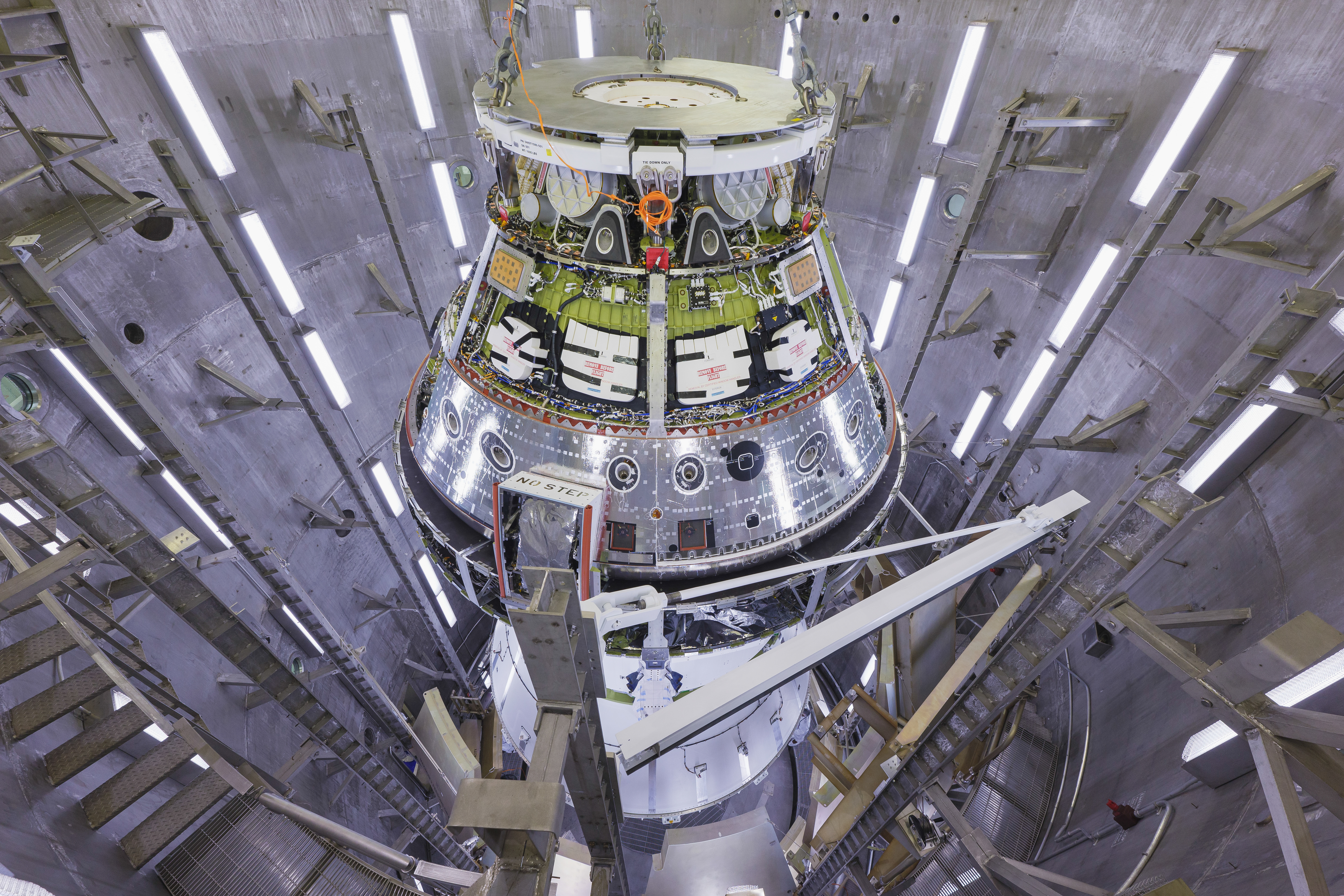
NASA’s Orion spacecraft for the Artemis II mission was lifted out of the Final Assembly and System Testing cell on June 28 inside the Neil A. Armstrong Operations and Checkout building at NASA’s Kennedy Space Center in Florida. The integrated spacecraft has been undergoing final rounds of testing and assembly, including end-to-end performance verification of its subsystems and checking for leaks in its propulsion systems.
A 30-ton crane returned Orion into the recently renovated altitude chamber where it underwent electromagnetic testing. The spacecraft now will undergo a series of vacuum chamber qualification testing. The tests will subject the spacecraft to a near-vacuum environment by removing air, thus creating a space where the pressure is extremely low. This results in no atmosphere, similar to the one the spacecraft will experience during future lunar missions.
Testing will span approximately a week, with technicians collecting data from the spacecraft’s chamber, cabin, and the environmental control and life support system to test spacesuit functionality. The data recorded during these tests will be used to qualify the spacecraft to safely fly the Artemis II astronauts through the harsh environment of space.

